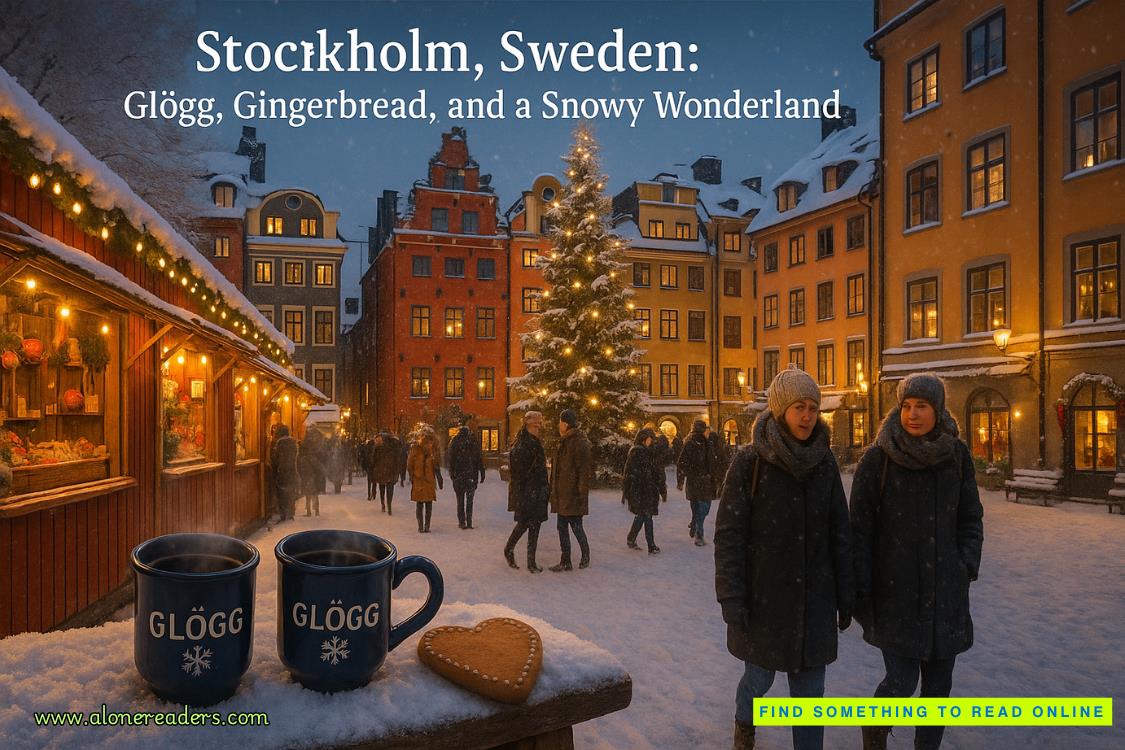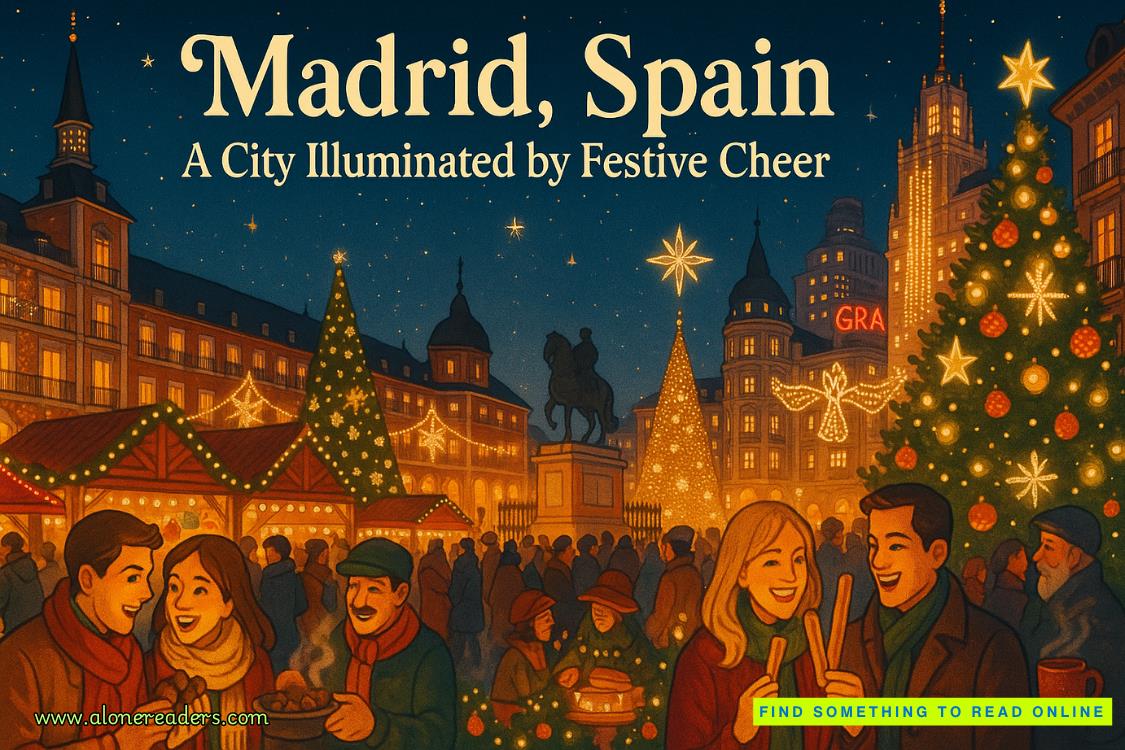Page 33 of The Night Circus
Opening day, or opening night, rather, is spectacular. Every last detail is planned, and a massive crowd gathers outside the gates long before sundown. When they are finally allowed to enter, they do so wide-eyed, and as they move from tent to tent, their eyes only get wider.
Every element of the circus blends together in a wonderful coalescence. Acts that have been training in separate countries on separate continents now perform in adjacent tents, each part melding seamlessly into a whole. Each costume, each gesture, each sign on each tent is more perfect than the last.
The air itself is ideal, clear and crisp and cool, permeated with scents and sounds that entice and enchant one patron after another.
At midnight, the bonfire is ceremoniously lit, having spent the earlier part of the evening standing empty, appearing to be a simple sculpture of twisted iron. Twelve of the fire performers quietly enter the courtyard with small platforms that they set up along the perimeter like numbers on a clock. Precisely one minute before the hour, they each ascend their respective platforms and pull from their backs shimmering black bows and arrows. At thirty seconds before midnight, they light the tips of their arrows with small dancing yellow flames. Those in the crowd who had not noticed them previously now watch in wonder. At ten seconds before the hour, they raise their bows and aim the flaming arrows at the waiting well of curling iron. As the clock begins to chime near the gates, the first archer lets his arrow fly, soaring over the crowd and hitting its mark in a shower of sparks.
The bonfire ignites in an eruption of yellow flame.
Then the second chime follows, the second archer sends his arrow into the yellow flames, and they become a clear sky-blue.
A third chime with a third arrow, and the flames are a warm bright pink.
Flames the color of a ripe pumpkin follow the fourth arrow.
A fifth, and the flames are scarlet-red.
A sixth brings a deeper, sparkling crimson.
Seven, and the fire is soaked in a color like an incandescent wine.
Eight, and the flames are shimmering violet.
Nine, and violet shifts to indigo.
A tenth chime, a tenth arrow, and the bonfire turns deepest midnight blue.
On the penultimate chime, the dancing flames change from blue to black, and for that moment, it is difficult to discern the fire from its cauldron.
And on the final strike, the dark flames are replaced with a blinding white, a shower of sparks falling like snowflakes around it. Huge curls of dense white smoke swirl up into the night sky.
The reaction from the crowd is uproarious. The spectators who had been considering taking their leave decide to stay just a bit longer and comment enthusiastically about the lighting of the fire. Those who do not witness it themselves hardly believe the stories told minutes or hours later.
People roam from tent to tent, wandering down paths that loop over each other, never seeming to end. Some enter each tent they pass, while others are more selective, choosing tents to enter after careful consideration of signs. Some find a particular tent so fascinating that they are unable to exit it, opting instead to stay there the duration of their visit. Patrons make suggestions to other patrons they pass on the concourses, pointing out remarkable tents they have visited already. Their advice is always taken with pleasure, though often the advisees are distracted by other tents before they locate the recommended ones.
It is difficult to usher the remaining patrons out as the dawn creeps up, and they are only consoled by assurances that they may return when the sun sets again.
All told, opening night is an undeniable success.
There is only one minor mishap of sorts, one unexpected occurrence. It passes unnoticed by any of the patrons, and many of the performers are not aware of it until after the fact.
Just before sunset, while the last-minute preparations are being made (costumes adjusted, caramel melted), the wife of the wild-cat tamer unexpectedly goes into labor. She is, when not in a delicate state, her husband’s assistant. Their act has been subtly modified for her absence, but the cats themselves seem agitated.
She is expecting twins, though they are not due for a few more weeks. People joke afterward that perhaps they did not want to miss opening night.
A doctor is brought to the circus before it opens to the public and escorted discreetly backstage for the delivery (an easier feat to accomplish than moving her to a hospital).
Six minutes before midnight, Winston Aidan Murray is born.
Seven minutes after midnight, his sister, Penelope Aislin Murray, follows.
When the news is relayed to Chandresh Christophe Lefèvre, he is mildly disappointed that the twins are not identical. He had thought up various roles in the circus for identical twins to perform once the children were old enough. Fraternal twins, on the other hand, lack the amount of theatricality he had expected, but he has Marco arrange the delivery of two enormous bouquets of red roses anyway.
They are tiny things, each with a rather surprising amount of bright red hair. They barely cry, staying awake and alert, with matching pairs of wide blue eyes. They are wrapped in spare bits of silk and satin, white for her and black for him.
A steady stream of circus performers comes to see them in between acts, taking turns holding them and inevitably remarking on their exquisite timing. They will fit right in, everyone says, save for their hair. Someone suggests hats until they are old enough for hair dye. Someone else remarks that it would be a travesty to dye over such a color, a shocking red much brighter than their mother’s auburn.
“It is an auspicious color,” Tsukiko comments, but she refuses to elaborate on her meaning. She kisses each twin on the forehead and later makes strings of folded paper cranes to hang above their cradle.















